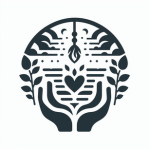This post may contain affiliate links. Please see our affiliate disclosure. This site is not meant to be a substitute for medical advice, diagnose or treatment. Please see our medical disclaimer.
In today’s fast-paced world, managing stress, improving mental clarity, and enhancing overall health have become essential. Alternate nostril breathing, or Nadi Shodhana in Sanskrit, is a powerful yet simple breathing technique with deep roots in yogic tradition. Practicing this technique can provide a range of physical and mental benefits, and it’s easy enough for anyone to incorporate into their daily routine. Let’s dive into the practice of alternate nostril breathing, its origins, and how it can help you live a healthier, more balanced life.
Introduction to Alternate Nostril Breathing
Definition and Overview
Alternate nostril breathing is a breathing exercise that involves closing one nostril at a time while breathing through the other, alternating between the two. This ancient yogic practice is designed to balance the flow of energy, or prana, through the body, helping to calm the mind, reduce stress, and enhance overall well-being.
Historical Background and Origins
Originating in the ancient practice of yoga and pranayama (the yogic science of breath control), alternate nostril breathing has been used for centuries to cleanse and balance the body’s energy channels. Nadi Shodhana, which translates to “channel purification,” is said to harmonize the left and right sides of the brain, promoting mental clarity and emotional balance.
Basic Principles of the Technique
The core principle of alternate nostril breathing is to regulate the breath in a way that balances the two main energy channels in the body: ida (left side) and pingala (right side). By alternating between nostrils, this practice helps synchronize brain hemispheres, improve focus, and foster relaxation.

Health Benefits of Alternate Nostril Breathing
Physical Health Benefits
Alternate nostril breathing offers several physical benefits, particularly for the respiratory and circulatory systems:
- Improved Lung Function: Regular practice can strengthen respiratory muscles and enhance lung capacity, making breathing more efficient.
- Better Cardiovascular Health: This technique can lower heart rate and blood pressure, reducing the strain on the heart and improving overall heart health.
- Boosted Immune Function: By reducing stress and promoting relaxation, alternate nostril breathing can strengthen the immune system, helping the body fight off illness.
Mental Health Advantages
This practice has profound effects on mental well-being, offering benefits such as:
- Reduced Anxiety and Stress: Alternate nostril breathing activates the parasympathetic nervous system, which helps calm the mind and relieve tension.
- Enhanced Mental Clarity: By balancing both hemispheres of the brain, this technique improves focus, concentration, and mental sharpness.
- Emotional Stability: The meditative nature of this practice can help stabilize emotions, making it easier to manage mood swings and overwhelming feelings.
Scientific Studies Supporting the Benefits
Several scientific studies have highlighted the positive effects of alternate nostril breathing. Research indicates that this practice can lower cortisol levels (the body’s stress hormone), improve cognitive function, and reduce symptoms of anxiety and depression. Studies also show that regular practice can improve autonomic nervous system function, promoting a state of calm and balance.

Preparing for Alternate Nostril Breathing Practice
Creating the Right Environment
Before beginning your practice, it’s important to set up a calm and peaceful environment. Find a quiet space where you won’t be disturbed. You may want to dim the lights, light a candle, or play soft music to create a soothing atmosphere.
Necessary Precautions and Contraindications
While alternate nostril breathing is generally safe for most people, certain precautions should be taken:
- Avoid practicing if you have a cold or nasal congestion, as this can make the technique uncomfortable.
- Those with respiratory conditions like asthma should consult a healthcare provider before starting the practice.
- Pregnant women or those with cardiovascular issues should practice with caution.
Proper Posture and Positioning
To get the most out of your practice, sit in a comfortable position, such as on a cushion or chair. Keep your spine straight, shoulders relaxed, and hands resting on your knees. Ensure that your head, neck, and spine are aligned to allow for smooth and unobstructed breathing.

Step-by-Step Guide to Practicing Alternate Nostril Breathing
Detailed Instructions for Beginners
- Sit comfortably with your back straight.
- Close your right nostril with your thumb and inhale deeply through your left nostril.
- Close your left nostril with your ring finger, release your right nostril, and exhale slowly through the right.
- Inhale through your right nostril, then close it with your thumb.
- Release your left nostril and exhale through the left.
- This completes one cycle. Repeat for 5-10 minutes or as long as feels comfortable.
Common Mistakes to Avoid
- Rushing the Breath: Take slow, deep breaths rather than rushing through the practice.
- Incorrect Finger Placement: Ensure you’re using your thumb and ring finger to close the nostrils gently.
- Shallow Breathing: Focus on diaphragmatic breathing, allowing your abdomen to expand with each inhalation.
Tips for an Effective Practice
- Start with just 5 minutes per session, gradually increasing the time as you become more comfortable.
- Practice on an empty stomach or after a light meal.
- Try to focus on your breath and stay present during the practice.

Incorporating Alternate Nostril Breathing into Daily Routine
Best Times of the Day to Practice
While alternate nostril breathing can be practiced at any time, the best times are early in the morning or before bed. Practicing in the morning can help set a calm, focused tone for the day, while an evening session can help you unwind and prepare for sleep.
Complementary Practices (e.g., meditation)
Alternate nostril breathing pairs well with meditation and mindfulness exercises. After completing your breathing practice, consider sitting in silence for a few moments, focusing on the sensations in your body and your state of mind.
Tracking Progress and Benefits Over Time
Keep a journal of your practice to track how you feel before and after each session. Over time, you may notice improvements in your mood, focus, and overall well-being. Reflecting on these changes can motivate you to continue your practice.

Advanced Techniques and Variations
Different Variations to Try
Once you’ve mastered the basic technique, you can experiment with variations, such as:
- Breath retention (Kumbhaka), where you hold your breath for a few seconds after inhaling and exhaling.
- Extended exhalations to deepen relaxation and enhance the calming effect of the practice.
Integrating with Other Breathing Exercises
Consider integrating alternate nostril breathing with other pranayama techniques, such as Bhramari (humming bee breath) or Ujjayi (victorious breath), to deepen your practice and experience additional benefits.
Resources for Further Learning and Skill Building
There are many resources available for those looking to deepen their practice of alternate nostril breathing:
- Books: “Light on Pranayama” by B.K.S. Iyengar is a classic text for understanding yogic breathing techniques.
- Online Classes: Many yoga studios offer virtual pranayama classes.
- Apps: Apps like Prana Breath or Breathwrk provide guided breathing exercises to support your practice.
Conclusion and Encouragement to Practice
Alternate nostril breathing is a simple yet profoundly effective tool for balancing your mind and body, reducing stress, and enhancing overall well-being. Whether you’re looking to improve focus, calm anxiety, or promote better sleep, this technique can be a valuable addition to your daily routine. By incorporating regular practice, you can experience the transformative benefits of this ancient technique in both your physical and mental health.
Suggested Resources & Reading
All links will open in a new tab/window so feel free to click and explore!
- Article: Learn Deep Breathing Today: Reduced Stress and Improved Health
- The Magic sold on Amazon
- Shop on Amazon now for all your needs
Per FTC regulations, I can make a small commission off of qualified purchases from some of the links on this page. This does not cost you anything extra. The prices are exactly the same whether you purchase through my link or a non-affiliate link. If you would like to learn more, please click HERE. Thank you 🙂
If you are interested in starting your own blog to make money, CLICK HERE to learn about this great opportunity!

